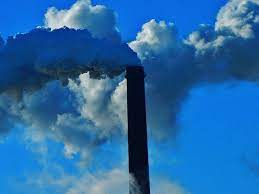Biological Characteristics of Natural Water
Biological Characteristics of Natural Water: Natural water has chemical, physical and biological characteristics. The living organisms in water also include microorganisms such as bacteria, protozoa, algae, and fungi. Viruses are parasites that cannot live and reproduce outside other living cells.
Apart from the chemical and physical characteristics of natural waters, living organisms also inhabit the water. These include bacteria, fungi, algae, and protozoa. Viruses are obligate parasites that must live and grow in other organisms and cause diseases in the process.
Biological Characteristics of Natural Water
Microorganisms that cause diseases and are transmitted through water are called waterborne pathogens. These include bacteria, viruses, and fungi. Microorganisms of interest in water include bacteria, fungi, algae, protozoa, and viruses.
1. Bacteria
Bacteria are among the most common microorganisms in water. They are single-celled organisms, having several shapes and ranging in size from 0.5 to 2 microns in diameter and 1 to 10 microns in length.

Bacteria have three major shapes vizrod-shaped bacteria (bacilli), spherical-shaped (cocci), and spiral-shaped. Some are single-celled; appear in pairs, chains, or clusters.
Bacteria feed on plants and animals in water and land. Some bacteria can use inorganic elements such as iron as sources of energy.
The growth of bacteria is faster in warm than cold temperatures. For each 10ºC increase, the bacterial growth rate doubles. pH affects the growth of bacteria as bacteria grow best when it is neutral. Metal ions like copper, lead, silver, and some pesticides are toxic and inhibit the growth of bacteria.
Many bacteria are aerobic and require free oxygen for growth while others are anaerobically requiring no free oxygen.
Facultative bacteria can switch from aerobic to anaerobic depending on environmental conditions. Bacteria multiply by binary fission dividing into identical daughter cells.
Under optimal conditions, bacteria can double in numbers every 20 -30 minutes. Some bacteria produce resistant spores which are viable structures regarded as the resting phase.
The spores can survive very harsh conditions. Waterborne diseases caused by bacteria include typhoid fever (Salmonella typhi), gastroenteritis (Shigellaspp, Campylobacterspp, EnteropathogenicE. coli), cholera (Vibrio cholera), leptospirosis (Leptospiraspp).
Read Also: What is the Methods used in Sampling and Measuring Water Quality parameters?
2. Protozoa
Protozoa are single-celled animals that are several times larger than bacteria ranging from 4-500 microns.
Protozoa are classified based on their modes of movement as:
i. Amoeba which moves by gliding or streaming action and changes shape as they move.
ii. Ciliates are covered with hair-like structures called cilia which beat rapidly and propel the organism. Most ciliates are free swimming, attached to floating materials or walls.
iii. Flagellates have one or more whip-like projections called flagella for movement.
iv. Suctoria are attached organisms and have tentacles rather than cilia.
v. Sporozoa are non-motile and are swept along with the current of water.
Protozoa feed mostly on bacteria and most protozoa are aerobic or facultative. They alternate between active growth phases (trophozoites) and a resting phase called cysts (extremely resistant structures that protect the organisms from harsh environmental conditions.
3. Viruses
The viruses are several times smaller than bacteria and are very simple life forms. They range in size from 0.02-0.25 microns in diameter. They have several shapes such as geometric polyhedral, long slender rods, and elaborate irregular shapes.
Viruses are intracellular parasites that must live and reproduce in host cells. A virus contains a central molecule of genetic material surrounded by a protein called a capsid and sometimes an additional layer called an envelope.
They cannot obtain energy or reproduce on their own. Viruses invade all kinds of cells and take over host cells forcing them to produce more viruses and destroy the cell in the process.
4. Algae
Algae are aquatic plants. Many of them are microscopic cells though visible when in masses or large numbers. Some are multi-cellular e.g. kelp found in marine waters. They occur in both clean and polluted waters. Algae are capable of carrying out photosynthesis (primary production).
Algae are classified according to color ;
i. Green algae contain chlorophyll and are found mostly in freshwater.
ii. Euglenoids are single-celled, green-pigmented, resemble protozoa, contain flagella, and carry out photosynthesis.
iii. Diatoms are golden-brown, single-celled, and have hard silica gel.
iv. Cyanobacteria are bluish-green in color, and can carry out photosynthesis, formerly called blue-green algae but are now classified as bacteria.



